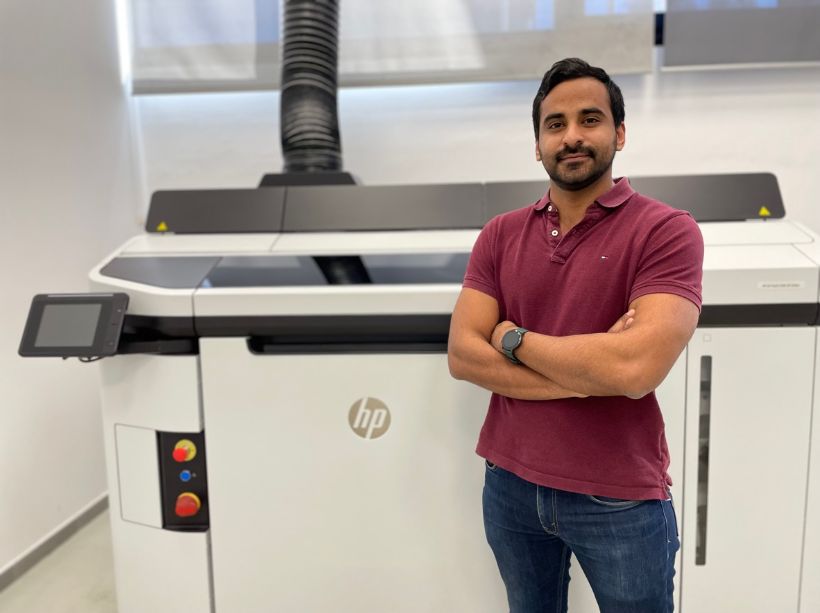Víctor Vaccaro: ‘working with additive manufacturing means thinking outside the box, because you’ve got enormous design freedom’
As an engineer and additive manufacturing expert, our colleague Víctor Vaccaro was the obvious choice for receiving training from HP when we decided to add HP Multi Jet Fusion technology to our services catalogue. Nearly 18 months have passed since that date. During this time, he has analysed data and lab tests, has performed tests and made a few mistakes before working on real projects with real satisfied clients. We talk to him today to learn about the current state of additive manufacturing:

Question: It’s been many months since Industrias Alegre embarked on the path towards additive manufacturing: Has it been what you had imagined?
Response: We didn’t have precise expectations. We imagined that many parts would have to be printed before having more detailed knowledge of this technology and its applications and that has been true. Maybe it’s turned out to be harder than we thought, but we have now attained a high level of expertise. Because the printer manufacturer trained us in terms of handling the equipment, maintenance, design feasibility and nesting (the way the parts are laid out in the print beds). However, it has clearly been our responsibility to draw our own conclusions on how to assure quality of the parts, their appearance, dimensional accuracy and mechanical properties. And optimising material consumption, of course.
Q: Was being an expert in polypropylene injection helpful in your learning process?
R: We are really seeing a completely different technology and, in this regard, it was like starting to train from zero. In fact, working with additives means thinking differently, because you’ve got enormous freedom in the design and you can forget about many limitations that you do have with injection. What has turned out to be important in this learning process is the knowledge we’ve got about the automotive sector and its requirements.
Q: And, have there been surprises?
R: There really haven’t been any surprises. We know a lot about polypropylene from our experience in the injection sector and the difficulties that we could face, so the toughest task has been knowing how to work to achieve the best results in each print bed. And – of course – being clear on the factors involved in the industrialisation process: the production and cooling times of the parts, the dimensional capability of the process and in which cases processes will be needed to meet market demands.
Q: How do you approach clients about the new technology entailed by 3D manufacturing?
R: When a new project comes in, we always perform a feasibility study on the part. This is quite routine for injection. However, for additive manufacturing and the design freedom it offers, we make recommendations to our clients that can exceed their expectations. We tend to optimise designs by lightening the weight, without compromising their mechanical strength.
Q: What types of jobs are you doing?
R: We already have clientele that constantly asks for pre-series and prototypes. For these types of tasks, 3D manufacturing is becoming common. As well as for validating changes in the design of parts. But demand is starting to become more receptive to new applications.
Q: You were at a series of conferences in November on this technology, along with HP and Sernauto, what concerns did you discover?
R: The questions were always centred on the real results obtained in 3D applied to the automotive sector: the production rates 3D printers can reach, the sizes and finishes they provide and the options for materials available on the market.
Q: Will additive manufacturing end up replacing injection technology?
R: Certainly, in the immediate future and in automobiles, we aren’t thinking about replacement but coexistence. We do hope that additives grow a lot, because they offer huge possibilities in design freedom, weight reduction and response time – for example – but we are speaking of highly specific tools that will probably work in parallel with existing ones.